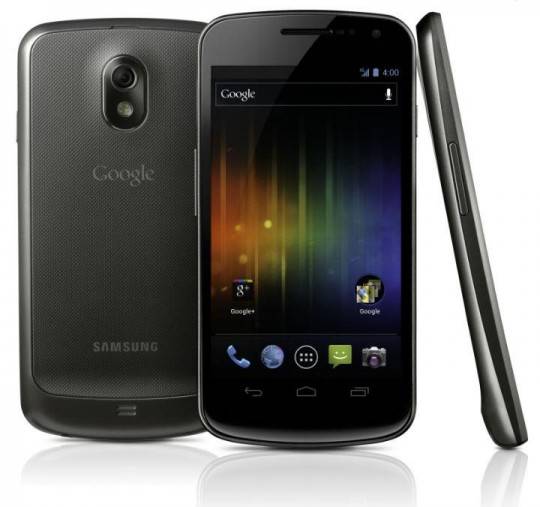
Samsung and Google put the eyes of the tech world squarely on Hong Kong last week as they unveiled the future of the Android platform. There they showed hardware and software that will set the tone for Android in 2012 and beyond, in the form of the Galaxy Nexus smartphone running Android 4.0, codenamed Ice Cream Sandwich. Here’s everything you need to know about the new phone and the new operating system.
Galaxy Nexus Hardware
To call Samsung’s newest flagship and Google’s latest developer device a “superphone” is an understatement. Without a doubt the star of the show is its curved 4.65-inch screen, pumping out a full HD resolution of 1280 x 720 pixels. And the Super AMOLED screen is one of the best out there, despite lacking the “+” RGB specification that would result in even denser pixels. The device runs a snappy 1.2 GHz OMAP 4460 processor, which is rated for 1.5 GHz but has been clocked down, and a gigabyte of RAM. Like the Nexus S, the Galaxy Nexus will not use an external memory card, but different versions will use 16GB or 32Gb, depending upon territory and carrier preference.
In addition to some top-of-the line specifications, the Galaxy Nexus has some new equipment that should make for interesting tools for developers. Despite a slower rollout of NFC than Google was hoping for, they’ve included it in the phone, as well as new temperature and barometer sensors. The latter should help acquire faster and more accurate location data. Nexus One-style electrical contacts allow for seamless docking on a desktop or car dock.

Samsung is claiming that the lower 5-megapixel/1080p camera is as good or better than the 8-megapixel shooters seen on other Android phones, and given the video we’ve seen on the Galaxy Nexus, we believe them. The front-facing camera is 1.3 megapixels. The back cover is coated in no-slip plastic that’s probably familiar if you’ve used one of the Galaxy S II phones before.
Galaxy Nexus Availability
Google and Samsung said at the event that the Galaxy Nexus would be available starting in November. Unfortunately, Verizon has not said when they plan to release the phone, though we know from Samsung that they’ll be the first in the US to get it. Various leaks point to a November 10th release date with a price of $299. In the UK the phone will cost £429, and NTT DoCoMo in Japan will get the first crack at the Galaxy Nexus.
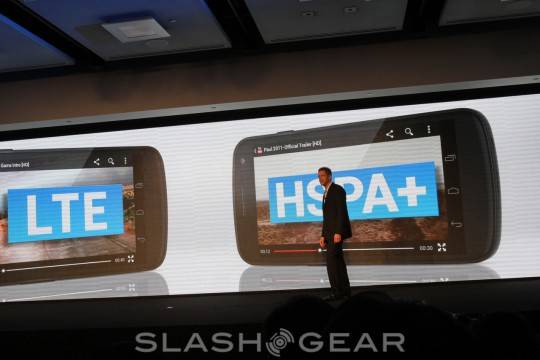
As far as coverage goes, the Galaxy Nexus comes in two primary hardware versions: HSPA+ and LTE. Different versions will be used where applicable – Verizon is obviously getting LTE, whereas HSPA+ versions are probably bound for AT&T and T-Mobile. The HSPA+ version is a super-slim 8.94 millimeters at its thinnest point, but the LTE version is noticeably thicker at the base.
Check out our hands-on looks at the Galaxy Nexus below:
Galaxy Nexus Hands-on
[vms 55018e2a459517fdb40e]
Ice Cream Sandwich
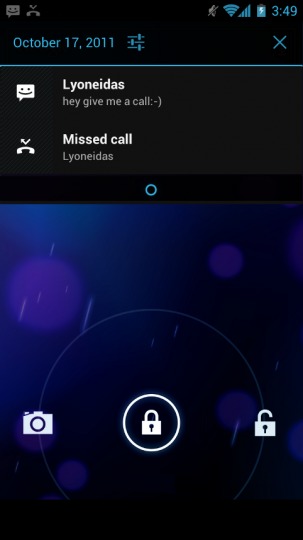 Arguably even more important that the Galaxy Nexus was Google’ unveiling of Ice Cream Sandwich, the long-awaited 4.0 version of Android. The Galaxy Nexus will be the first phone to run it, an will be the standard for development. Ice Cream Sandwich’s most important feature isn’t one that you can see: it unites the code found in the smartphone version of Android (Gingerbread) and the tablet version (Honeycomb). Its interface shifts to accommodate differences in screen style and user method, and its SDK and APIs allows apps to do the same.
Arguably even more important that the Galaxy Nexus was Google’ unveiling of Ice Cream Sandwich, the long-awaited 4.0 version of Android. The Galaxy Nexus will be the first phone to run it, an will be the standard for development. Ice Cream Sandwich’s most important feature isn’t one that you can see: it unites the code found in the smartphone version of Android (Gingerbread) and the tablet version (Honeycomb). Its interface shifts to accommodate differences in screen style and user method, and its SDK and APIs allows apps to do the same.
New features
That said, there’s hardly a single part of the Android user interface that hasn’t seen a complete overhaul. Beginning with the lockscreen, notifications are now usable before unlocking the phone, and ca apps can be launcher directly from the pull-down bar. The lockscreen either unlocks the phone or takes the user to the revamped Camera app, using a modified Honeycomb ring lock mechanism. It can also be unlocked using facial recognition from the front-facing camera. Speaking of the Camera app, it’s now much, much more powerful, with things like continuous auto focus, facial recognition and more advanced user-accessible photography settings. Once a photo or video is taken it can be instantly shared to Google+ and other social networks, or any service that takes advantage of its open API.A basic Instagram-style photo editing feature now resides in the overhauled Gallery app.
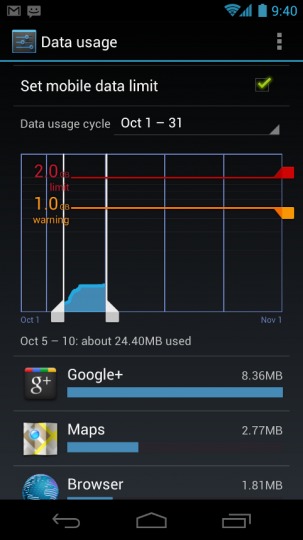
The homescreen shows a lot of influence from Honeycomb as well, especially in its task manager activated from the new navigation button. In addition to quickly switching between apps, users can swipe one away WebOS-style to quit it and free up memory. The homescreen uses Honeycomb-style widgets and searching, and for the first time in a stock launcher, you can manually resize widgets. The folder feature gets some much-needed UI attention as well. Particular attention has been paid to contacts in the new People app, which displays vivid pictures in a grid. The individual listings allow contacts to be connected to their handles on various social networks, and keys into the appropriate app when activated.
Google is getting a good handle on the realities of the modern smartphone market with a new feature: the data manager. It allows you to see your data use actively without any widgets or plugins, and extrapolated how much you’ll probably use in the future based on previous usage. It also allows users to automatically cut the data connection at a certain point, making for a lot of savings on data-hungry phone bills.
One of the most intriguing uses of NFC we’ve ever seen is the new Android Beam feature. It allows users to instantly share links, maps, videos, apps, or indeed anything that takes advantage of the API, instantly from phone to phone. The process is a  lot like infrared sharing back in the old Palm Pilot days. You place two NFC-enabled Ice Cream Sandwich apps back-to-back, activate Beam, and the location, app or other information is instantly shared with the opposite phone.
lot like infrared sharing back in the old Palm Pilot days. You place two NFC-enabled Ice Cream Sandwich apps back-to-back, activate Beam, and the location, app or other information is instantly shared with the opposite phone.
Availability
Google never open-sourced Honeycomb, but they’re planning on releasing the AOSP source code to the public shortly after the November launch of the Galaxy Nexus. Developers can begin developing code for the OS now with the Ice Cream Sandwich SDK, and Motorola, HTC and Samsung are already promising upgrades for their high-end Android phones and tablets. A few adventurous modders couldn’t wait that long: they’ve already ported Ice Cream Sandwich to the Nexus S and Nexus One.
The first non-Nexus Ice Cream Sandwich phones are probably months away at this point, but Asus is getting the drop on the tablet market with the forthcoming Eee Pad Transformer Prime. The follow-up to the original Transformer has already been shown off in a website and video, and the formal unveiling is scheduled for November 9th.
New information on Ice Cream Sandwich (like game controller support!) is coming out all the time. Keep an eye on Android Community and @Androids for the latest updates. For a look at all of the software in action, check out our hands-on video of Ice Cream Sandwich below.
Ice Cream Sandwich Hands-on
[vms 4b1be110b7bf70c8362d]
[device id=1740]



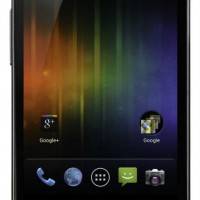
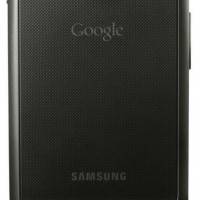


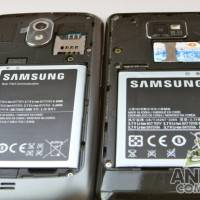
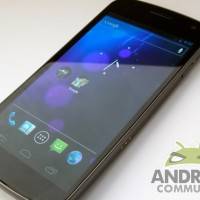


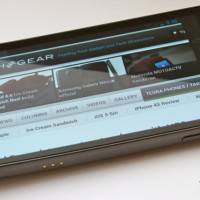



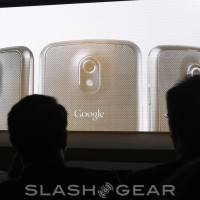



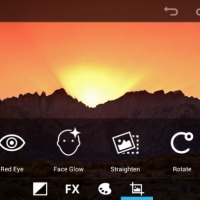
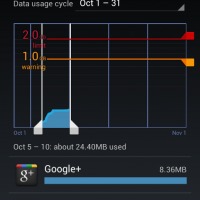
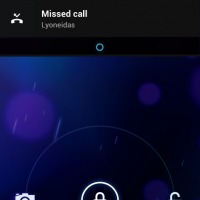








Dang why no sd card.. Why only 5mp.WHHHHHHHHHHHHYYYYYYYYYY
mp’s dont matter, go to romain guy’s google+ and watch the video taken with the nexus and you’ll see why. The camera is so good on this thing. I would def rather have an awesome 5mpp sensor than a crappy 8mp anyday
agreed. I have the Dinc with an 8mp camera and my wife’s 1st gen iPhone 4 takes way better photos with a 5mp. I wish that it had an sd card slot but now that I’m using Google Music I’m not really using it much anyways. i’ll prob go for the 32GB just to make sure I have enough room for movies and stuff like that but I don’t see me using all that room.
i wish Google would comment on the lack of a SD card 🙁
Google is implementing use of the cloud.
That’s smart, since all networks have 4 bar coverage everywhere you go. I’ll just stick my audiobooks in the cloud and use my unlimited data plan to stream them to my car.
If this is what Google is thinking, I’d like some of what they’re smoking.
I agree. I’d rather have 32GB of easily-movable SD storage than onboard storage any day.
there’s nothing easy or simple about having to unmount the card (or turn off the phone), remove the battery, in order to use it for something else. personally, I havent pulled my sd card out since I used it to help a co-worker flash clockworkmod on her Sam G. That was months ago. And maybe there is no substantial proof but I think sd cards slow down the phone anyways. maybe thats just my experience too.
I have a 64 GB Micro SDXC card. So switching to this I lose half my storage. In the future you cannot upgrade storage either on a nexus prime.
It really is not hard to open up your phone and remove the SD card.
I was hoping that this review would confirm one way or the other whether the Galaxy Nexus uses both the American GPS system AND the Russian Glonass system to give a potential of around 50 satellites for satnav and location – that would be far better than a barometer to assist initial lock. I am pretty sure that the Samsung Note has both but the Galaxy Nexus spec just vaguely states “GPS” which these days does not necessarily mean the US operated system.
This smart phone is amazing. Browser is fast enough, I didnt experience any significant lag. No pre loaded apps so you can customise the phone as you go. I love it.
I love my original Samsung Nexus.. I just got the Ice Cream Sandwich update about 2 weeks ago. Ever since my battery has been DYING ridiculously fast.. like within 3 hours.. And I am using it the exact same if not less than before…. ANYONE ELSE experiencing this?